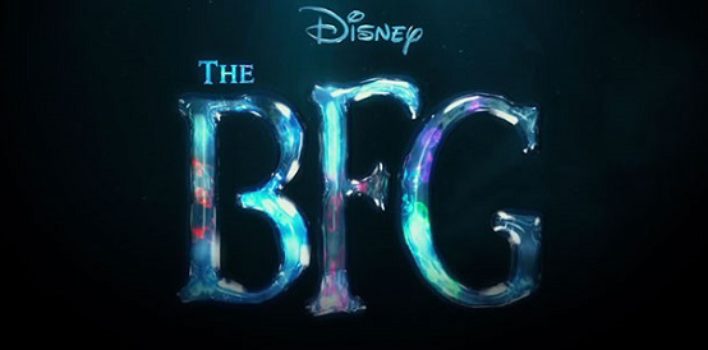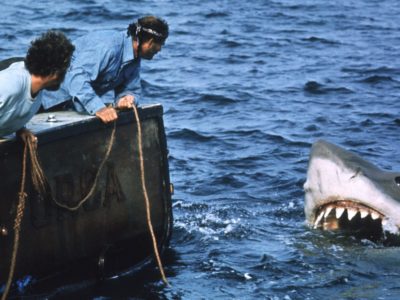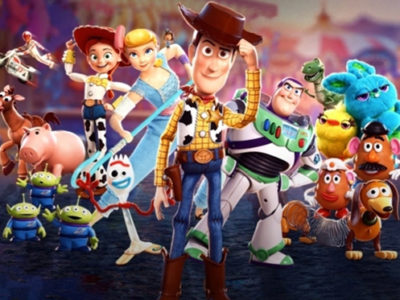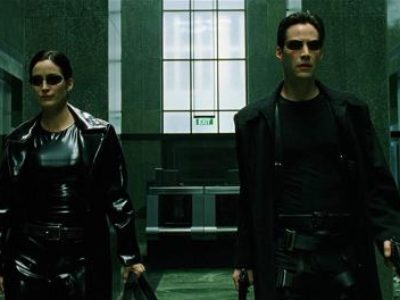Review| The BFG
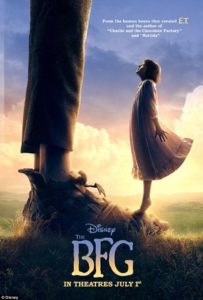 Roald Dahl was one of the most successful children’s story writers of the 20th century. His name may not be one that is oft-spoken in the average household, but the stories he created no doubt are; Charlie and the Chocolate Factory, James and the Giant Peach, Matilda, and the screenplay for Chitty Chitty Bang Bang to name a few. In 1982 he published one of his better known children’s novels, The BFG, which saw an animated adaptation a mere 7 years later. The story is one that trades on a child’s fears, as do many of Dahl’s stories, and places it in a fantasy realm to soften otherwise difficult material. With 2016’s theatrical adaptation, Steven Spielberg makes use of a predominance of CGI and motion capture and creates a solid product largely loyal to Dahl’s original novel. Far from a tent-pole summer blockbuster, Spielberg’s adaptation of The BFG is an endearing and pleasant film worthy of catching in the theaters.
Roald Dahl was one of the most successful children’s story writers of the 20th century. His name may not be one that is oft-spoken in the average household, but the stories he created no doubt are; Charlie and the Chocolate Factory, James and the Giant Peach, Matilda, and the screenplay for Chitty Chitty Bang Bang to name a few. In 1982 he published one of his better known children’s novels, The BFG, which saw an animated adaptation a mere 7 years later. The story is one that trades on a child’s fears, as do many of Dahl’s stories, and places it in a fantasy realm to soften otherwise difficult material. With 2016’s theatrical adaptation, Steven Spielberg makes use of a predominance of CGI and motion capture and creates a solid product largely loyal to Dahl’s original novel. Far from a tent-pole summer blockbuster, Spielberg’s adaptation of The BFG is an endearing and pleasant film worthy of catching in the theaters.
Relative newcomer Ruby Barnhill plays Sophie, a young girl at an orphanage in England whose apparent insomnia leads to her discovery of the existence of giants. Her interactions with these entirely computer generated creatures is performed very well and rivals that of previous efforts this year by Neel Sethi in The Jungle Book. Ruby never betrays what her imagination must be convincing her of and she hits every beat required of her as Sophie. It is not just any giant that she first encounters, but as luck would have it she discovers the friendliest giant possible. Mark Rylance lends his tender voice to the BFG and I would not prefer any other actor to this role. The mannerisms and facial expressions notwithstanding, Rylance’s voice alone appealed to a greater sense of warmth and care than anything that motion capture could have conveyed on its own. His handling of the peculiar language of the giants brought a smile to my face with every whizz-bang and gobble-knob. With Ruby taken from the orphanage and now under the care of the BFG in giant country, the BFG must protect her from his kin who are not so receptive of human beings among them. What follows is a beautifully crafted tale of protection, trust, and dream-catching.
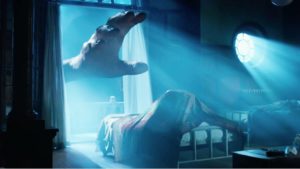 One common trait you will find in many Roald Dahl children’s stories is a child of varying degrees of innocence and resourcefulness under threat from one or more adults, and under the care of one or more adults. Think on any of the above cited works and you’ll see that showing up in some way. Due to those similarities, Dahl’s stories are often dealing with themes of protection, necessary deception, and kidnapping. The latter is a fear common in many parents, and the former is a need required by all children. Dahl’s expression of these themes in The BFG happen upon a child without her own personal protection and an ‘adult’ (giant, in this case) who acts contrary to how it seems normal giants act. The BFG exhibits traits of kindness and mercy whereas his kin desire to devour young children. This is a clear but useful contrast in relaying to our own children watching this with us the virtues of caring for “the least of these”, then relating it back to the clear command that orphans are of a specific group we are to explicitly care for (James 1:27). But there is more depth here that can lead to greater discussion not just with our children, but with others who find this story intriguing.
One common trait you will find in many Roald Dahl children’s stories is a child of varying degrees of innocence and resourcefulness under threat from one or more adults, and under the care of one or more adults. Think on any of the above cited works and you’ll see that showing up in some way. Due to those similarities, Dahl’s stories are often dealing with themes of protection, necessary deception, and kidnapping. The latter is a fear common in many parents, and the former is a need required by all children. Dahl’s expression of these themes in The BFG happen upon a child without her own personal protection and an ‘adult’ (giant, in this case) who acts contrary to how it seems normal giants act. The BFG exhibits traits of kindness and mercy whereas his kin desire to devour young children. This is a clear but useful contrast in relaying to our own children watching this with us the virtues of caring for “the least of these”, then relating it back to the clear command that orphans are of a specific group we are to explicitly care for (James 1:27). But there is more depth here that can lead to greater discussion not just with our children, but with others who find this story intriguing.
It should not be ignored that the motives of the BFG were originally selfish in nature. Sophie spotted him out her window, and out of a desire to remain undiscovered he kidnapped her. His intention was never to harm her, but only to protect himself and his homeland. From this encounter with one who, as far as she knew might have meant her harm, Sophie found opportunity to befriend someone who was on the surface unlike her in every visible way. It wasn’t until a friendship was struck that she discovered their similarities, that she could bring him strength, and that she could in fact offer him a degree of protection. This is an important aspect of the story to highlight, particularly to our children. When very young, children don’t care for social stature or good looks or skin color when deciding who to play with or with whom to develop friendships. But as they grow old those distinctions often turn into gulfs between people for whatever reason. Whether it be a learned or natural trait of our humanity, it is our differences we all first notice and allow us to separate ourselves before we allow time to make connections based on similar interests, personalities, or even faith. It’s stories like The BFG, however fanciful, that remind us that our differences need not be insurmountable hurdles to developing lasting friendships.
 All in all the film is a solid effort. Spielberg once again gets the best out of Mark Rylance for their second film in a row together (Bridge of Spies). He stays true to the narrative and even details of Dahl’s original novel. There are places in the middle where it started to lose connection with me personally, and by the end I feel that most of the work done in the beginning to connect me to this world of giants among men is not fully paid off and is even rushed a bit. One scene in particular when the BFG and Sophie are becoming cordial with the Queen of England felt unnecessarily slapstick and quite out of place. Those complaints aside I would recommend this for a theater viewing to anyone even remotely interested. It is largely a joy to behold, there are moments of utter beauty especially when dealing with the BFG’s profession as a dream-catcher, and the scary sequences with the larger giants are not too dark or threatening to scare away a child.
All in all the film is a solid effort. Spielberg once again gets the best out of Mark Rylance for their second film in a row together (Bridge of Spies). He stays true to the narrative and even details of Dahl’s original novel. There are places in the middle where it started to lose connection with me personally, and by the end I feel that most of the work done in the beginning to connect me to this world of giants among men is not fully paid off and is even rushed a bit. One scene in particular when the BFG and Sophie are becoming cordial with the Queen of England felt unnecessarily slapstick and quite out of place. Those complaints aside I would recommend this for a theater viewing to anyone even remotely interested. It is largely a joy to behold, there are moments of utter beauty especially when dealing with the BFG’s profession as a dream-catcher, and the scary sequences with the larger giants are not too dark or threatening to scare away a child.


